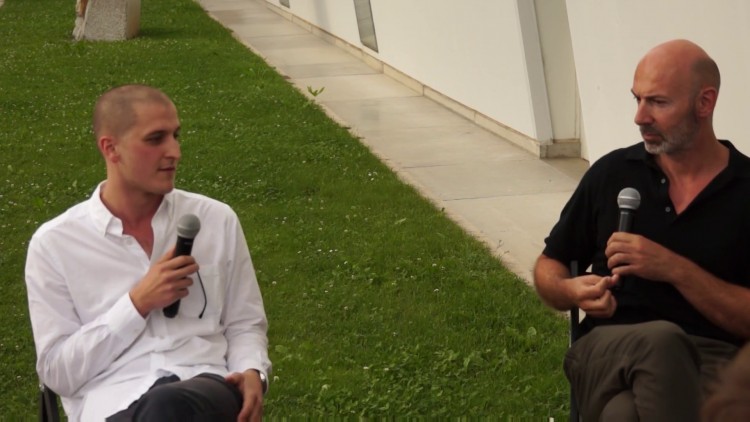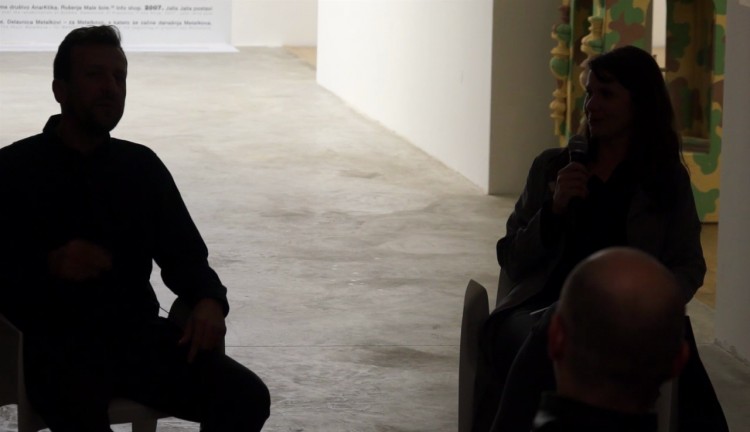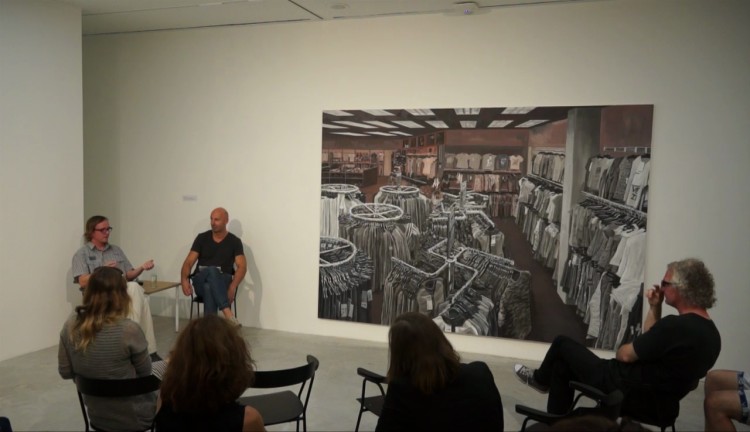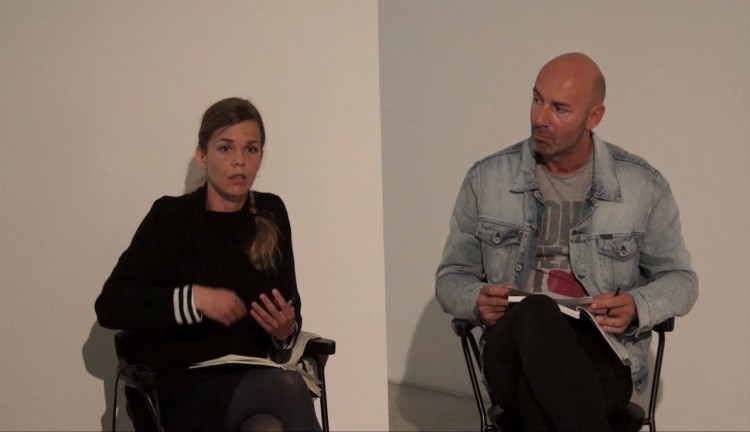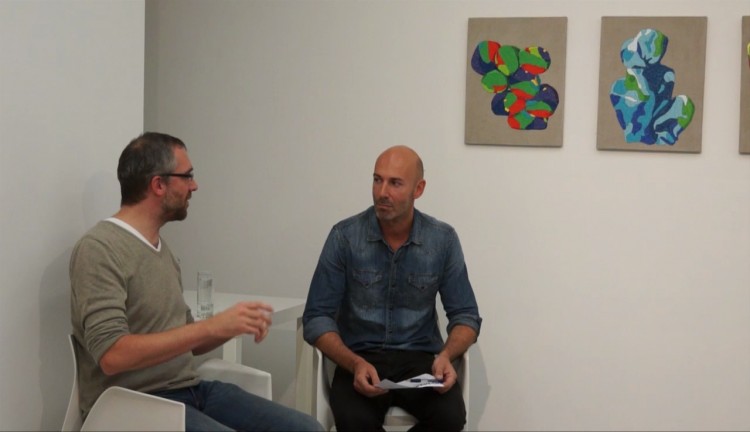Arjan Pregl's artistic practice expands into social space, making use of and critically reflecting (on) various available media. Taking into consideration his own role in society, Pregl develops critical, political, and resistance strategies. In his paintings he builds open, internally contradictory, heteronomous, and multilayered structures based on the tensions between the visual (and sometimes textual and conceptual) fragments. The structure of the paintings in The Five-Minute Revolution has been greatly influenced by the possibilities of technical production and manipulation. The structure of the pictorial field is based on photographs of two, formally and ideologically contrastingly positioned public sculptures by Drago Tršar. Pregl has "removed" the monuments, replacing them with an appropriately enlarged decorative "hobby" sculpture. Such technical reproduction does not exclude manual work: the paintings are produced in the traditional techniques of pencil and oil on canvas, but the role and significance of the procedure has been considerably altered in and by the new context. Replacing the emotionally and polemically charged monuments with banal abstract color masses made from Fimo modeling clay is a critical and ironic reference to the relativism of aesthetics and the political revisionism of our time and place.



